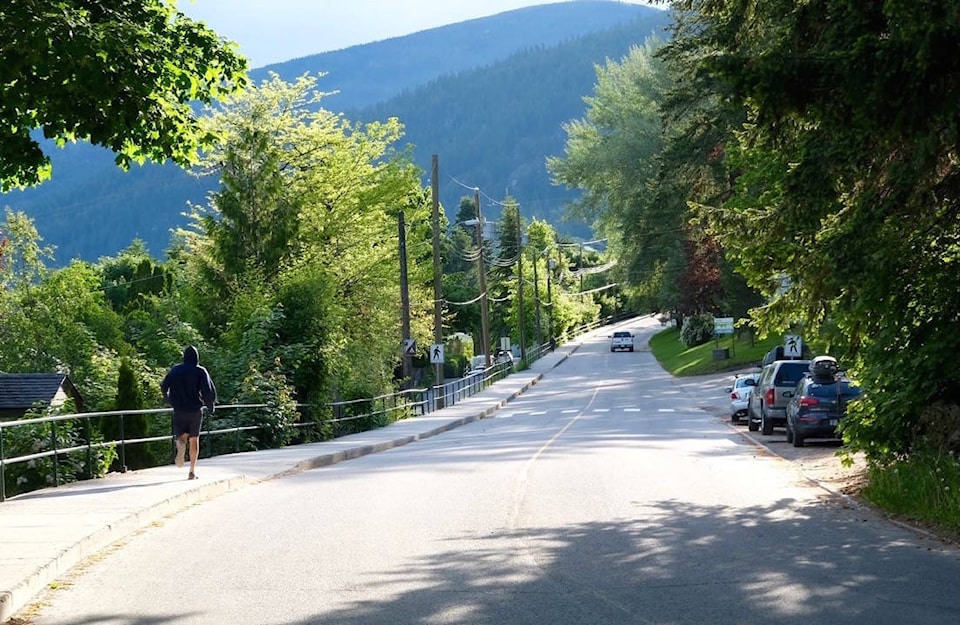Nelson city council has rescinded its decision to turn High Street into a one-way vehicle street with a protected bike lane.
The new decision is to make High Street a shared street with two-way traffic in which vehicles are expected to share each lane with bikes. There will be signage and education to indicate cyclists are not expected to crowd over against the curb to let cars go by. Instead, cars and bikes will have equal status in each lane.
This change will be made this year and then evaluated after a year. There will be more speed bumps and a speed limit of 30 km/h. The intersection at Nelson Avenue and Anderson Street will be closed to vehicles entering or leaving the High Street corridor.
This closed intersection is intended to lower the traffic flow in the High Street corridor to allow the bike route to be designated as AAA (all ages and abilities). This is consistent with council’s philosophy that bike routes are not just for experienced adult cyclists, but for families.
To achieve AAA status, the guideline accepted by planners of bike infrastructure, traffic volume would have to fall below 1,000 vehicles per day. Currently the volume is about 2,000. Traffic would also have to travel below 30 km/h.
Why the back-track from one-way to two-way vehicle traffic?
The mayor has the authority to ask council to reconsider a council decision. Councillor Rik Logtenberg told council last week that he asked Mayor John Dooley to do this because he began to have second thoughts about the one-way vehicle traffic plan.
Dooley, along with councillors Janice Morrison and Cal Renwick, voted against the one-way street option in a 4-3 council vote on May 4.
Logtenberg said the one-way street decision left unanswered questions such as which direction the one-way traffic would flow and how snowplowing would work in the winter with separated bike lane infrastructure. He said he was concerned a significant portion of the public was not on board.
“We had significant opposition just in the room [the 4-3 council vote],” he told council, “and I thought this is not an auspicious beginning. So I did reach out to … the mayor, then I went out and talked to people. I biked it, I drove it, and I could not figure out it. I realized we don’t know how to do this.
“I decided we should phase it in, and learn as we go, and bring the community along with us. This the only way I can see this being a success.”
Councillor Keith Page spoke in opposition to Logtenberg. He said this was another example of governments being timid about dealing with climate change.
“We are half as far as we need to be on climate change,” he said. “Again we are being asked to water something down. We need to say this is our primary bike network, this [a one-way vehicle street with protected bike lane] is the core of it, and this is where we are starting.”
Council agreed that if one year of the shared street does not accomplish AAA, then the one-way vehicle traffic will have to be considered again.
The new plan passed unanimously.
The West Kootenay Cycling Coalition, which was involved in the year-long consultation and planning for the project, told the Star after the meeting that it is still in favour of a separated bike lane with one-way vehicle traffic.
Anna Lamb-Yorski, the group’s president, said she is skeptical that speed limits will be enforced or adhered to or that the vehicle traffic could be reduced to 1,000 per day. And she said the city’s Path to 2040 Sustainability Strategy envisions 70 per cent of residents using active transportation (walking or cycling) as their mode of transportation by 2040.
“Most of the data shows that you need protected bike lanes to increase ridership,” she said.
But she conceded that council’s new approach could work.
“If their phased approach meets the AAA guidelines and traffic volumes decrease dramatically, then it might work,” she said.
The city expects to receive a $420,000 provincial government grant for the entire bike route project that includes High Street (either shared street or one-way), the Third Street bike route, and additional downtown bike parking, along with engineering design and traffic management costs. The estimated total cost of the entire project is $600,000, with the city providing the difference of $180,000.
Correction: We originally reported mistakenly that Councillor Keith Page voted against this plan. The vote was unanimous and we changed the story on June 4 to reflect that.
Related:
• Nelson’s High Street will become one-way to make room for bike lane
• Nelson council hopes to create bike route from bridge to downtown
• Nelson council ponders bike and walking routes
bill.metcalfe@nelsonstar.com
Like us on Facebook and follow us on Twitter
